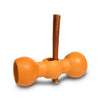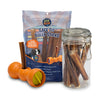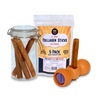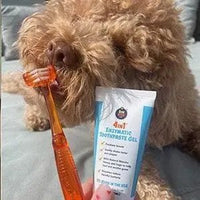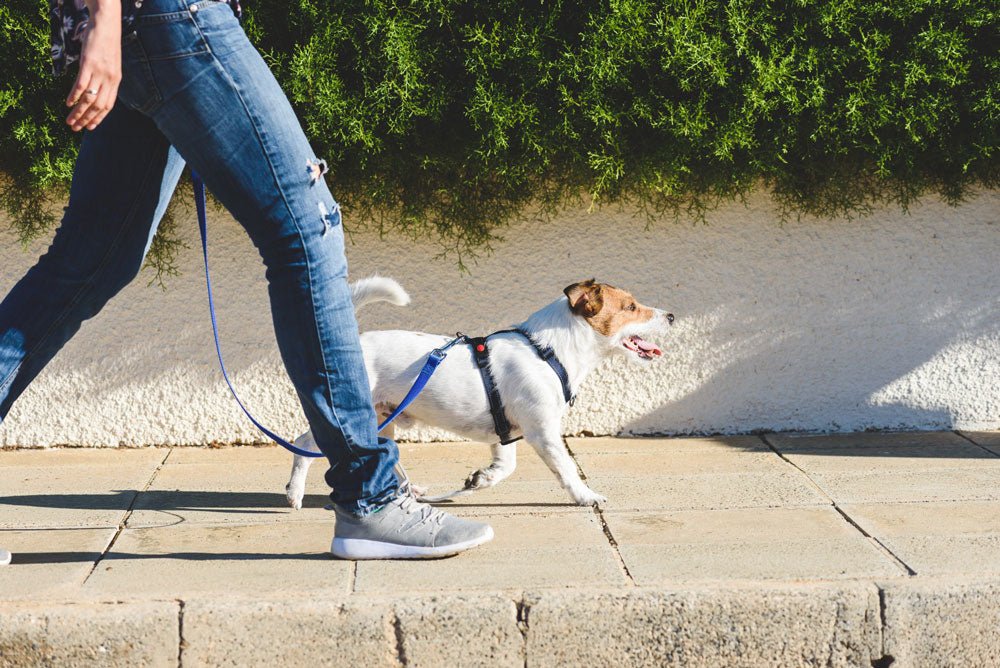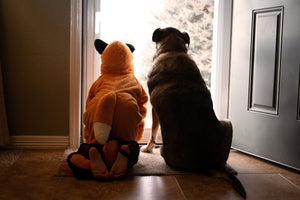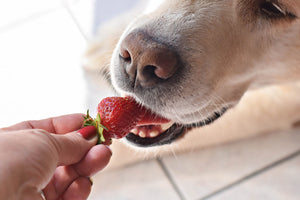Chances are, you are spending a lot more time at home these days.
From your dog’s perspective, this new routine is a dream come true. More frequent and longer walks! Mom and/or dad are always home! Lots of snuggly couch time!
As for us humans, our daily dog-walking routine is more important than ever. It provides us with critical physical and mental benefits, not to mention a break from cabin fever. In fact, your dog walk might be the activity in your day you look forward to most.
Now is a perfect time to reintroduce leash training and reward positive behaviors during your daily walking routine—especially given that you may be encountering more dogs and people than normal.
4 Ways to Make the Most of Your Dog’s Walk
We’ll be sharing more leash-training strategies in an upcoming blog post. In the meantime, as you embark on your next dog walk, here’s what you need to know to keep your outing safe, relevant and stimulating:
1. Practice proximity.
What we now call social distancing has always been a natural expectation during a leashed dog walk. Proximity is the appropriate distance in which our dogs can sit or heel calmly when exposed to different elements or (sometimes scary) objects that they come across during a walk—whether it’s another dog, a person, a stroller or a bike. Use a treat that is more desirable than the distraction to keep your pup focused on you. If done properly, this exercise will help your dog associate the distraction or variable that causes them fear or excitement with something that gives them pleasure while remaining calm.

Pro Tip: During your daily walks, use encounters with a neighbor or friend walking their dogs as an opportunity to work on proximity. Ask your dog-walking friend to walk parallel to you—maintaining proper social distancing—while having your dogs on the opposite sides of your bodies. This will teach your pup to walk and listen when other dogs and people are nearby.
2. Bring high-value treats.
Anytime you’re teaching your dog a new skill or encountering a new experience, high-value treats are a must. These are extra special treats they don’t regularly get at home, and are used to reward good behavior, make positive associations, or turn a negative association into something positive. Small pieces of steak, chicken or cheese make good high-value treat choices.
3. Add "mental" walks.

If you can take more than one dog walk a day, make one of your outings less physical and more mentally stimulating. Allow your dog time to take in sights and sounds—for example, give them a minute or two to take a long sniff of the smells left by other dogs at a tree or clump of grass. This slower-paced exploration will allow them to be mentally engaged and enriched. Even if you can’t squeeze in multiple walks per day, alternating between physically stimulating walks and mental stimulating ones will go a long way toward preventing boredom. Dogs’ olfactory system is directly linked with their brain so the extra mental effort will tire them out.
4. The gift of time.

To be sure, we are living through challenging times. The silver lining for dog owners is that your special bond with your pup keeps you active, provides you with companionship, and even helps lower your blood pressure! Next time you and your dog are out for a neighborhood stroll, take a moment to breathe in the fresh air, notice your surroundings, and appreciate the opportunity to spend extra time bonding with your dog.
Stay Tuned For More Leash Training Tips
Be sure to check back next week for more great training ideas. We’ll be sharing expert tips for leash training that you can do with your dog during your daily walk. Plus, we’ll discuss strategies for training exercises that you and your dog can practice without ever leaving home.



